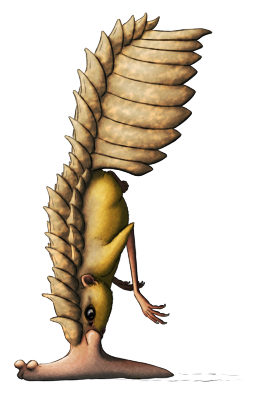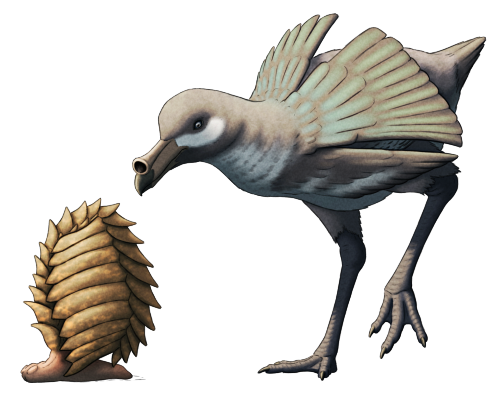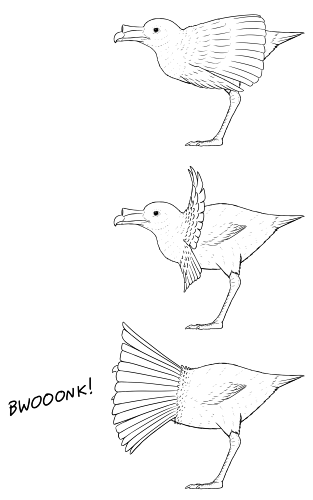Today’s #Spectember concept is brought to you by @thecreaturecodex , who wanted to see a depiction of something from The Snouters: Form and Life of the Rhinogrades:

Part of the snail-like nasolimacid family, the armor-tailed slime snouter (Nasolimaceus conchicauda*) lived only in the marshlands of the little volcanic islet of Eeza-zofa in the remote South Pacific Hi-yi-yi Archipelago. Like other members of the Rhinogradentia it descended from shrew-like ancestors isolated from the rest of the world back in the Late Cretaceous, and had a highly specialized “nasorium” – a complex appendage derived from its snout.
Similar in size to a mouse, up to 20cm in total length (8″), this snouter’s nasorium was modified for locomotion, forming a creeping foot similar to that of a gastropod mollusc. It was capable of moving at surprising speed for its size, gliding along over damp mud at up to 20cm per second, and it fed exclusively on small Ankelella snails that shared its swampy habitat.
Its back and tail were covered in large keratinous armor plates, similar to those of a pangolin, and it was able to curl itself up inside a spiky protective “shell” to defend itself from its main predator: Fritsch’s megaphone bird (Hypsiboas fritschii**).

(In the snouter book this bird species is mentioned only in passing, so I’m providing my own bonus interpretation of much of its appearance and biology here.)
The size of a large thrush, around 30cm long (12″), Fritsch’s megaphone bird was a flightless petrel related to the hydrobatids. With long legs and reduced webbing on its toes it was a strong runner, and like other petrels its nostrils were enclosed in a characteristic “tubenose” – but modified into a larger, longer structure that gave it both a keen sense of smell and functioned as a resonating chamber to produce loud droning honking sounds.
Its elaborate iridescent plumage was not part of its wings as may first appear, but instead was made up of highly elongated back and neck feathers forming a “cape” around its body. In a bizarre display these feathers could be raised and arranged into a distinctive forward-pointing cone around its head, acting as a natural megaphone and amplifying its calls to rival some of the most deafening volumes known among birds.

Sadly both of these unique species are now extinct, along with all the other inhabitants of the Hi-yi-yi islands, after nearby nuclear weapons testing in the mid 1950s caused the entire archipelago to suddenly sink beneath the ocean’s surface.
*Miscaptioned as Rhinolimaceus conchicauda in Plate III of the original book.
**A genus name in dire need of replacement, since Hypsiboas is already in use for tree frogs.
